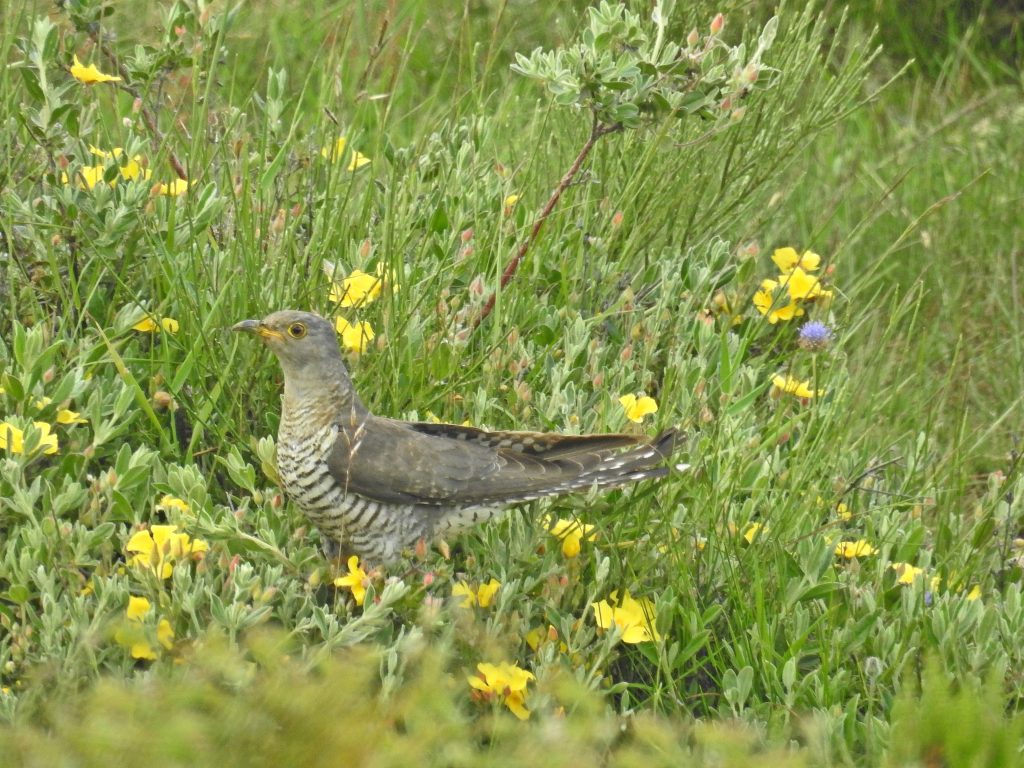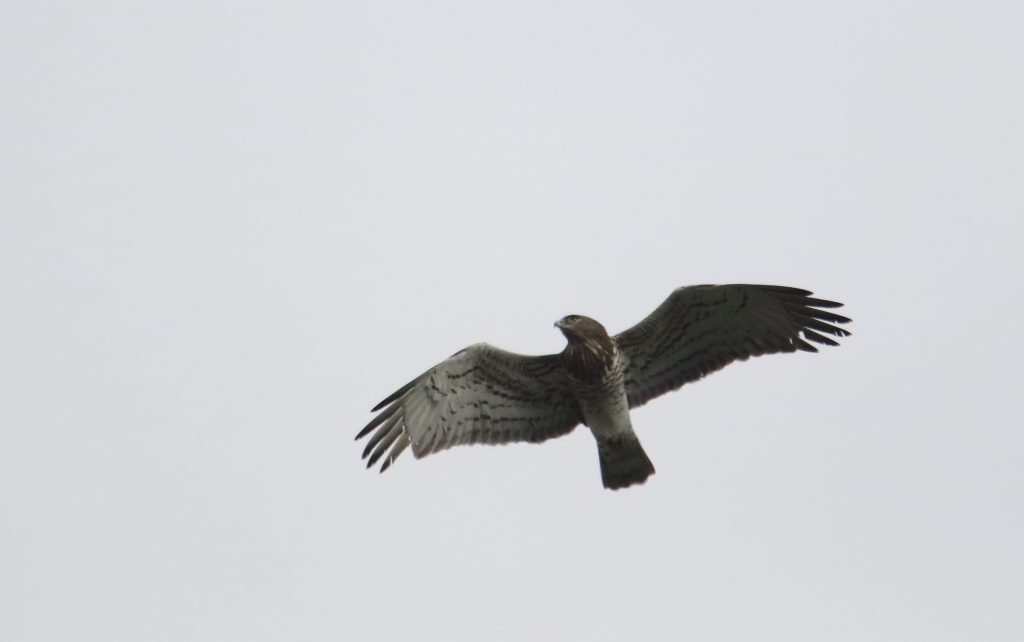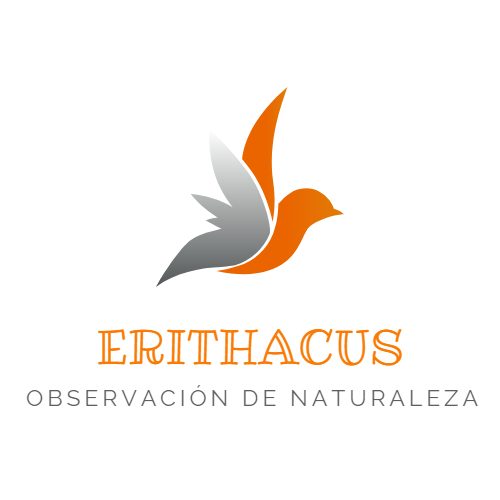La primavera es una de las estaciones más recomendables para conocer y disfrutar la biodiversidad que nos rodea. La explosión de vida salvaje, rodeada de una infinita paleta de flores, que emerge vivaz en estas semanas del mes de Abril, es quizá uno de los fenómenos naturales más vibrantes de cuantos podemos contemplar.
Los constantes pero a menudo breves chubascos aparecen de la nada en nuestra primavera, alternándose con agradables periodos soleados que permiten descubrir el azul del cielo entre las nubes o a los cada vez más escasos reptiles soleándose. Es también, en estos momentos, cuando tienen lugar los bellos conciertos de los pájaros ocultos entre las forestas y el matorral. Currucas rabilargas, acentores comunes, alcaudones reales, críalos y por supuesto el ubicuo canto del Cuco común ponen una nota de alegría a esta bella estación del año.

Cuco (Cuculus canorus)
Con esta sensación vernal, refugiándonos en los momentos de lluvia aunque también disfrutando de la belleza efímera e impredecible del tiempo atmosférico, realizamos ayer una actividad de observación de naturaleza en estas onduladas montañas de la provincia de Zamora. En esta ocasión, los participantes de la jornada fueron una agradable familia de origen holandés.
Con el propósito principal de observar a uno de los más escurridizos animales que habitan en estos pagos, el Lobo ibérico (Canis lupus signatus) dedicamos nuestro esfuerzo a la búsqueda y detección de animales salvajes, usando la indispensable óptica. A lo largo de toda la jornada, disfrutamos de varios grupos de ciervos que se alimentaban en los pastizales naturales, así como de un astuto y escondidizo zorro mientras cazaba roedores en una pradera.

Águila culebrera (Circaetus gallicus)
Entre los chubascos, que nos obligaban a parar en nuestra búsqueda, nos dedicamos a conocer los rastros y otros aspectos anatómicos de algunas de las especies que ya habíamos observado previamente. Un bello alcaudón real, comenzaba a realizar sus falaces reclamos, lo que nos permitió observarlo perfectamente a través del telescopio, anunciándonos que de nuevo la lluvia pararía pronto.
Efectivamente, con un clima y una temperatura muy cambiante, pudimos disfrutar de varios períodos más para observar a la fauna salvaje. Una breve pero bella imagen de un águila culebrera, sobrevolando el mar de urces y carquesas que inundan las laderas en estos días de violetas y gualdos tonos, dejaba paso a los últimos intentos del día para dar con el fugitivo carnívoro.
De pronto, uno de los grupos de ciervas que observamos previamente apacentados, se mostraba en alerta. Un pequeño enfoque con el telescopio permitió observar que una de las siluetas que aparecía desdibujada entre el matorral era un lobo. Estáticos presas y depredador, cuando los participantes se dispusieron a observar a través del telescopio, de pronto algo asustó a ambos animales, no siendo posible observar al cánido que desapareció en el tupido bosque.
Con apenas pocos minutos de luz por delante, no pudimos localizar de nuevo a este animal o a sus congéneres, pero si disfrutamos de un bello atardecer de luces rojizas y dobles arcoiris.
Queremos agradecer la estupenda y constante atención durante la actividad a los participantes y a nuestros amigos de Naturaliste una vez más.

————————————————————————————————————————————
Spring is one of the best seasons to get to know and enjoy the biodiversity that surrounds us. The explosion of wildlife, surrounded by an infinite palette of flowers, which emerges in these weeks of April, is perhaps one of the most vibrant natural phenomena to behold.
The constant but often brief showers appear out of nowhere in our spring, alternating with pleasant sunny spells that allow us to discover the blue of the sky between the clouds or the increasingly rare reptiles sunning themselves. It is also at this time that the beautiful concerts of birds hidden in the woods and undergrowth take place. Dartford warblers, blackcaps, woodchat warblers, loggerhead shrikes, redstart shrikes and of course the ubiquitous song of the common cuckoo add a note of joy to this beautiful season of the year.

European cuckoo (Cuculus canorus)
With this vernal feeling, taking refuge in the rainy moments but also enjoying the ephemeral and unpredictable beauty of the weather, we carried out yesterday a nature observation activity in these undulating mountains of the province of Zamora. On this occasion, the participants of the day were a nice family of Dutch origin.
With the main purpose of observing one of the most elusive animals that live in this area, the Iberian Wolf (Canis lupus signatus), we dedicated our efforts to the search and detection of wild animals, using the indispensable optics. Throughout the day, we enjoyed several groups of deer feeding in the natural grasslands, as well as a cunning and hidden fox hunting rodents in a meadow.

Short -toed eagle (Circaetus gallicus)
In between showers, which forced us to stop in our search, we spent some time getting to know the tracks and other anatomical aspects of some of the species we had previously observed. A beautiful loggerhead shrike was beginning to make its fallacious calls, which allowed us to observe it perfectly through the telescope, announcing that the rain would soon stop again.
Indeed, with the weather and temperature very changeable, we were able to enjoy several more periods of wildlife viewing. A brief but beautiful image of a short-toed eagle, flying over the sea of urces and carquesas that flood the slopes in these days of violet and yellow tones, gave way to the last attempts of the day to find the fugitive carnivore.
Suddenly, one of the groups of hinds that we had previously observed grazing was on the alert. A little focus with the telescope allowed us to see that one of the silhouettes that appeared blurred in the thicket was a wolf. Static prey and predator, when the participants set out to observe through the telescope, something suddenly startled both animals, and it was no longer possible to observe the canid, which disappeared into the dense forest.
With only a few minutes of light left, we were not able to locate this animal or its conspecifics again, but we did enjoy a beautiful sunset of reddish lights and double rainbows.
We would like to thank the participants and our friends from Naturaliste once again for the great and constant attention during the activity.

